 2016 JI Summer Design Expo
2016 JI Summer Design Expo
Corporate-driven Topics Follow the New Trend of IoT Technology
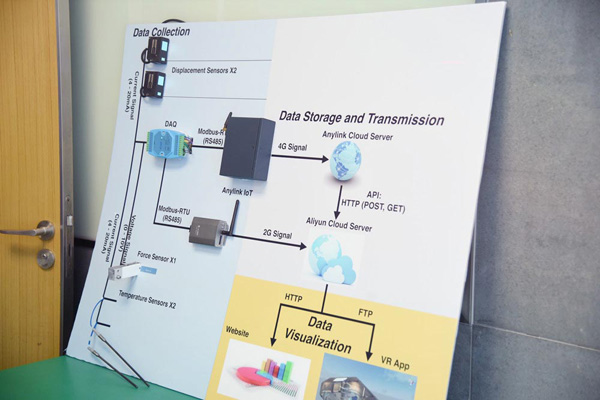
Lab in the Pocket
Laboratory monitoring typically requires the lab personnel to shuttle back and forth between different laboratories to tediously record the experimental data, sometimes even in a hazardous environment. The Siemens-sponsored project “Pocket Labs – Remote Monitoring of Virtual Reality” effectively solves this problem by combining the two cutting-edge technologies, i.e., Virtual Reality” (VR) and Internet of Things (IoT). The students designed a data collection and visualization system. With just a cell phone and a Virtual Reality headset the laboratory personnel can have an immersed sense moving in the lab and monitor laboratory equipment remotely, as if having the labs in their pockets.
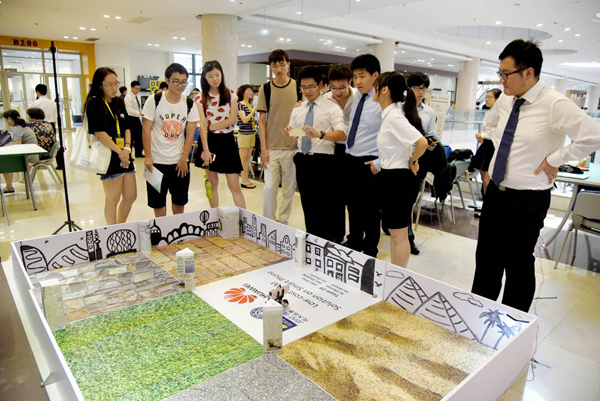
Low Cost SLAM Realization on Smart Phone
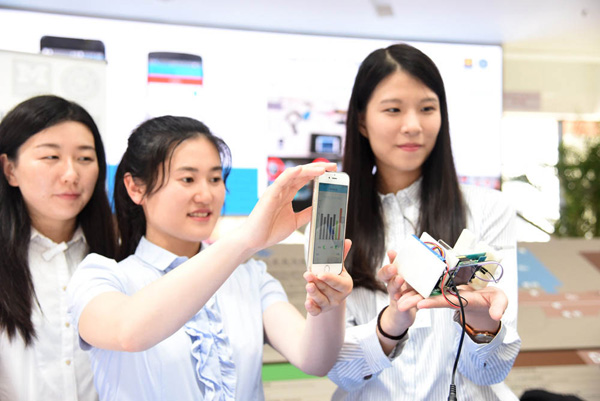
Bluetooth-enabled Smart Insulin Pen
In recent years, diabetes has become a major health crisis in China. For diabetic patients requiring long-term use of insulin, the team of project “Bluetooth-enabled Smart Insulin Pen” designed a portable insulin pen to provide patients with a more convenient injection experience. After being connected with a smart phone, the insulin pen mobile application will remind the user of insulin injections and specify the injection dose through Bluetooth data transmission. After successful injection, the embedded microcontroller will also send feedback information via Bluetooth to mobile applications, providing user-friendly real-time management.
Smart and Practical Freshman Innovations
In addition to capstone design projects, the freshman projects are as creative. Comparatively, freshmen paid more attention to practical problems encountered in daily life and proposed unique solutions that are innovative and intelligent.
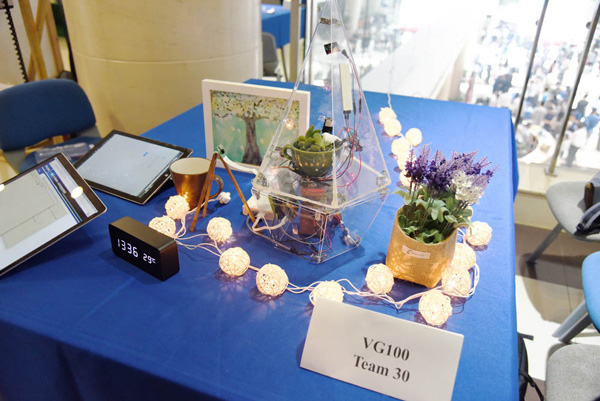
Smart Plant Carer
House plants have gradually become an integral part of the living space. The project “Intelligent Plant” tried to build a new relationship between plants and people, turning watering and lighting the plants an interactive process. Team members gave the plants a sense of real-time life by using a touching lamp with breathing effect. In addition, the network control features enable users to remotely control the care of plants through the website.
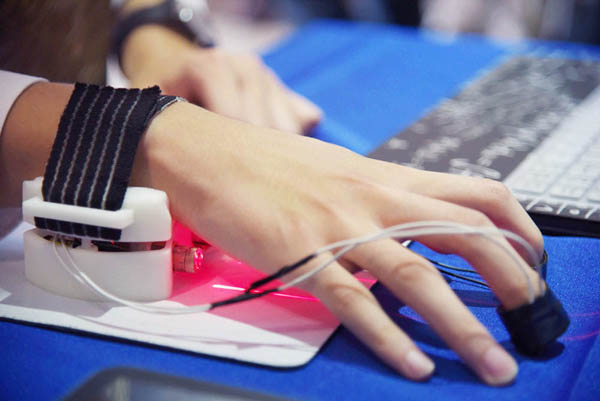
Laser Mouse
With the advent of computers, the calluses have moved from people’s fingers to wrists from excessive mouse use. To solve this problem, the “W-Mouse” group replaced the traditional hard mouse body with rubber padded wrist cushion to prevent wrist damage. Moreover, in order to reduce noises and improve the mouse’s overall visual effect, team members also use lasers to replace the traditional left and right mouse buttons.
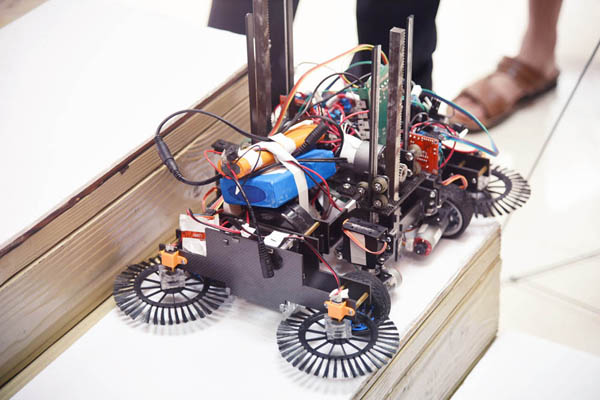
Stair Cleaning Robot
A four-wheel cleaning robot attracted a lot of attention. The project team combined the dual automatic functions of climbing stairs and sweeping. When the cleaning mode is activated, the four wheels can rotate freely and turning to multiple directions on the stairs, including climbing. In addition, a brush and a fan can be attached with the four wheels to achieve the sweeping function.
Undergraduate Research Projects Inspire Junior Students to Tackle High Tech Topics
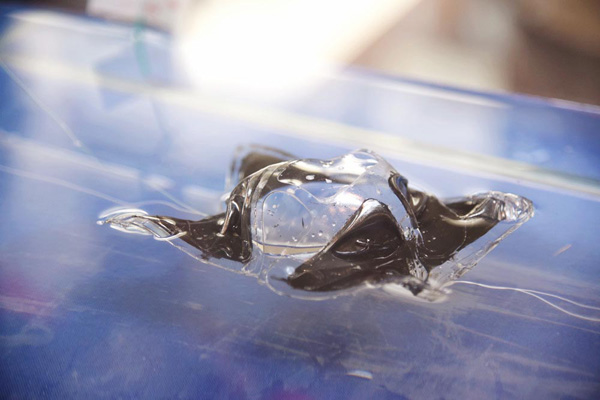
Bionic Jellyfish Based on Dielectric Elastomer
Bionics is playing an increasingly significant role in the application of science and engineering. In the field of biomimetic robots, the driving and transmission structure composed of traditional rigid material can not completely simulate some animal movements. For example, the mollusk such as earthworms and jellyfish move by peristaltic motion from contraction of muscles which cannot be simulated using traditional rigid material. The team of project “Bionic Jellyfish Based on Dielectric Elastomer” applied the telescopic principle of dielectric elastomer when connected with power to designing a kind of three-dimensional polymer structure similar to the cavity of jellyfish. They explored the feasibility and performance of underwater moving of the three-dimensional structure by simulating jellyfish’s expanding-contracting, draining-filling movement. In the future, this technology is expected to be applied to precision instruments, miniaturized robots, robot bionics and other fields.
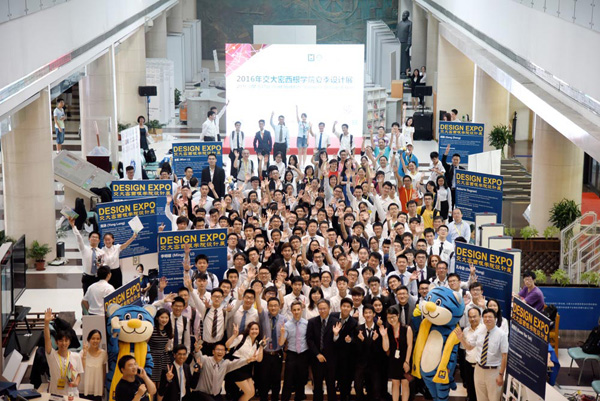 Students and faculty at the Design Expo
Students and faculty at the Design Expo
JI’s experimental courses not only stimulate students’ interest in engineering but also develop their technical communication and creative thinking skills. In 2015, JI added the course “Undergraduate Research Projects” into the curriculum, based on faculty members’ research projects and targeting the junior and senior students. Students are encouraged to participate in SJTU’s PRP (Participation in Research Projects) and IPP “Innovative Participation Program.”
Due to their creativity and excellent presentation, 50% of JI undergraduate students’ IPP projects have been promoted to the Shanghai municipal level and national level.
2016 JI Summer Design Expo Award List
Vg100: Introduction to Engineering
- Best innovation Award:
- Drink Serving Robot
- NannyBall
- Best technology Award:
- Stair Cleaning Robot
- High-Speed Photography Assistant
- Best performance Award:
- Portable Finger Print Identified Lock
- Handy Scanner
VE/VM450 Capstone Design Projects
- Silver Award:
- Parking attendant OA system on Smartwatch
- Wearable Device Used in Warehouse
- Low Cost SLAM Realization on Smart Phone
- Gold Award:Pocket Labs – Remote Monitoring of Virtual Reality





